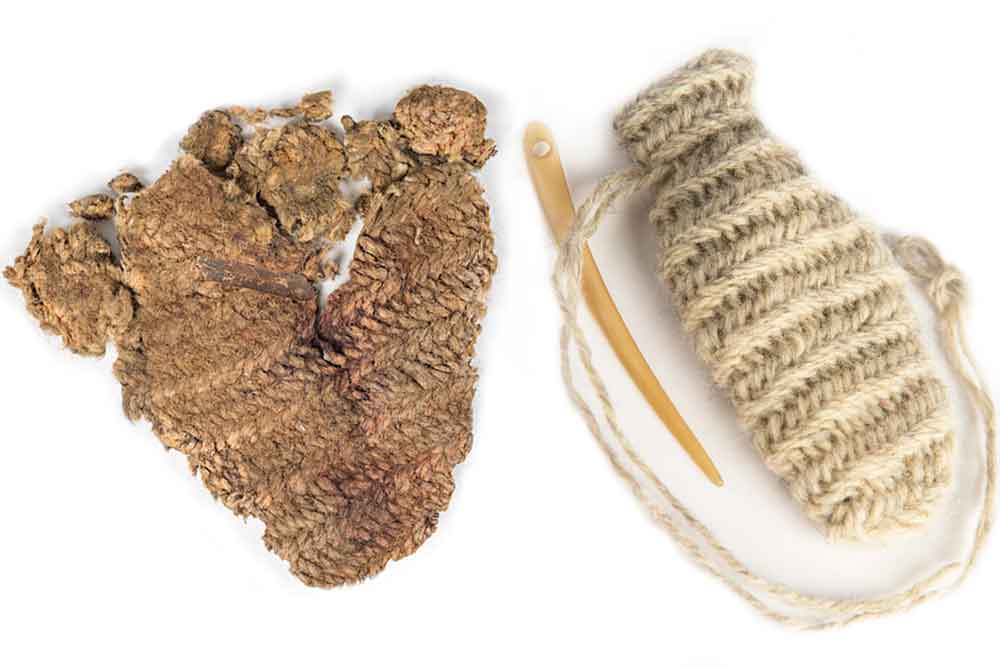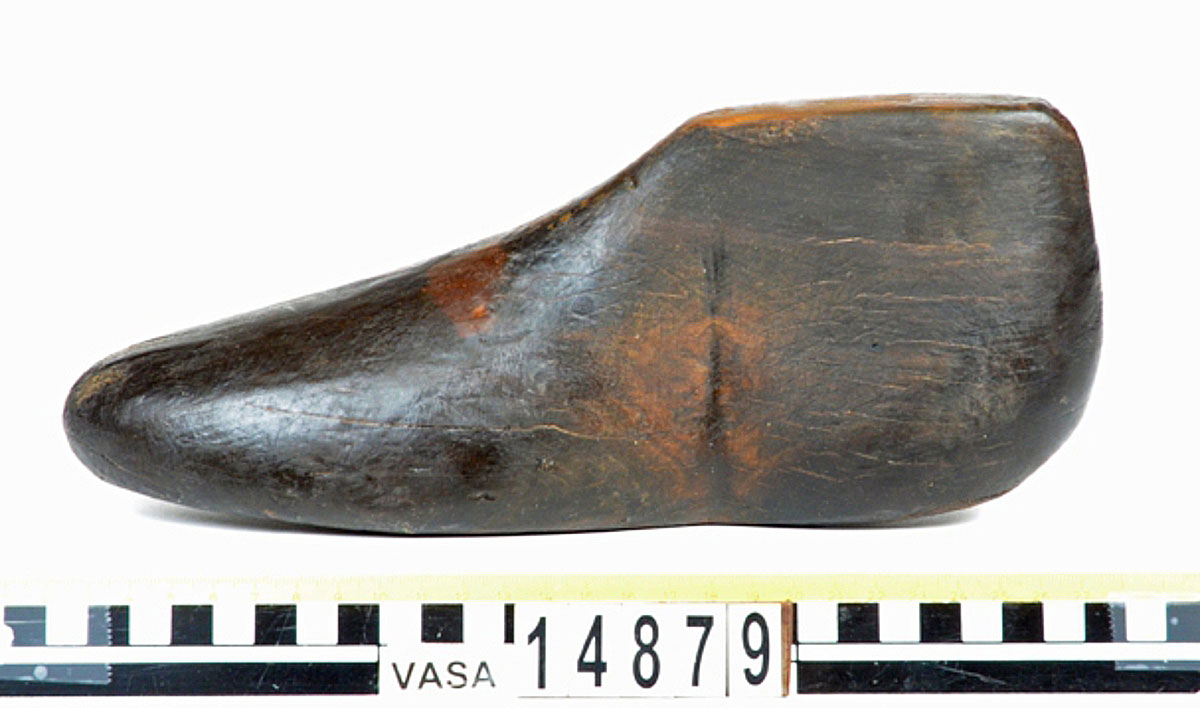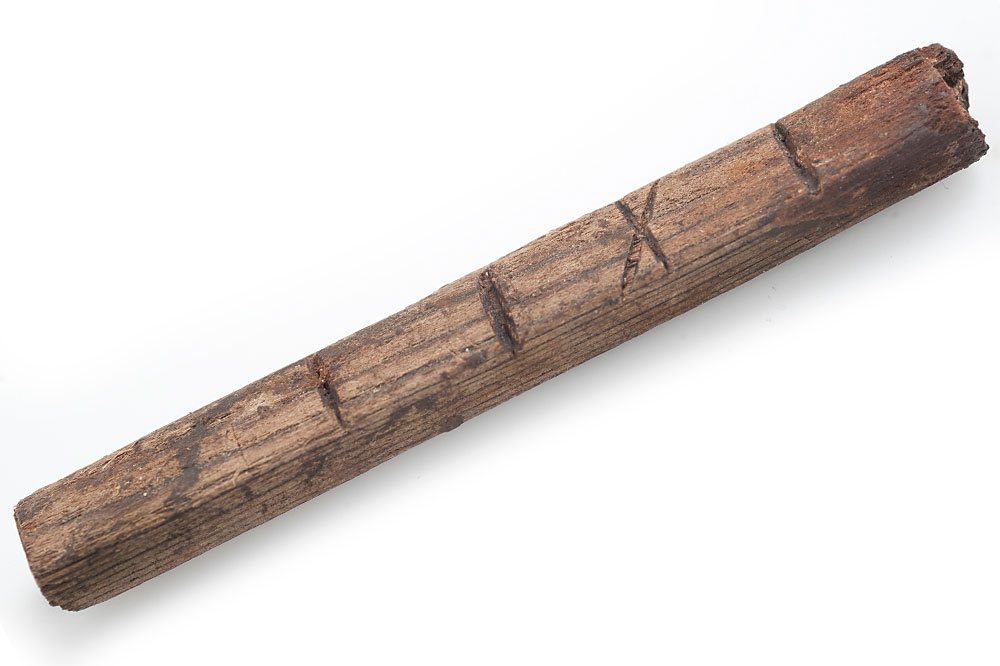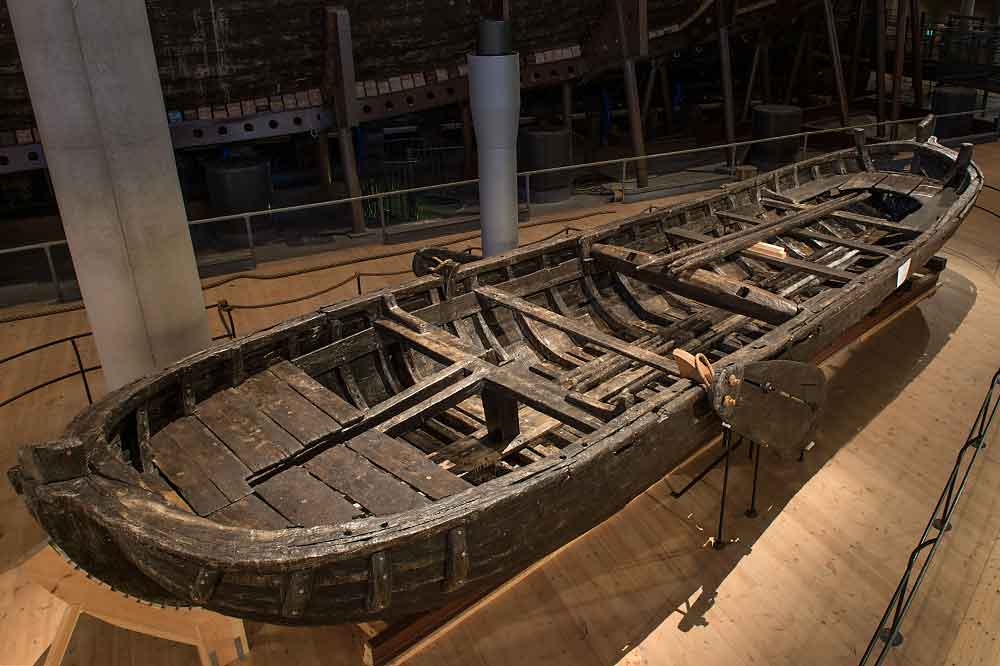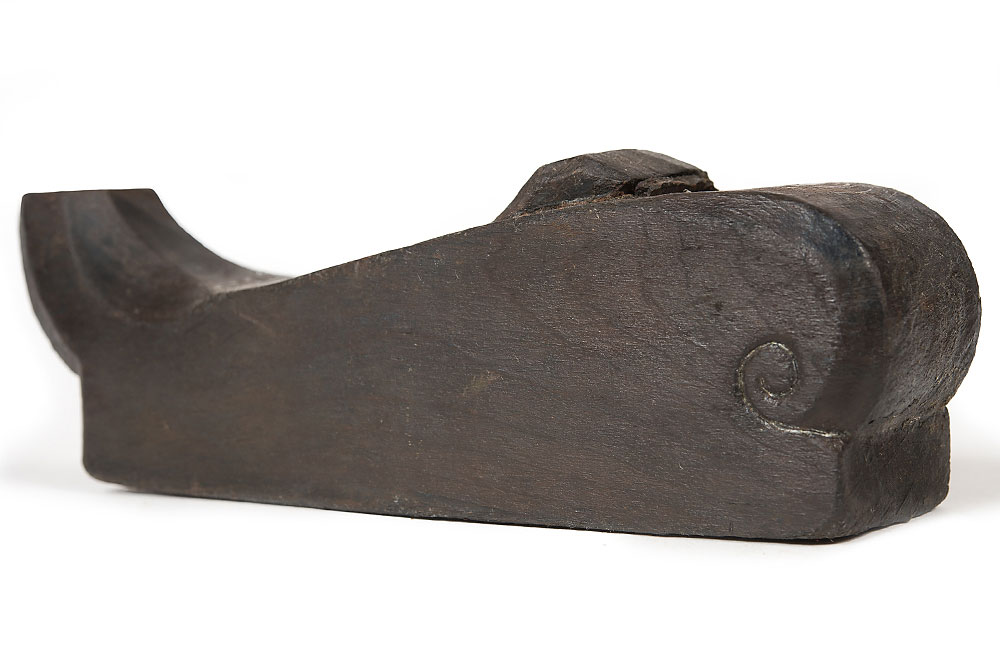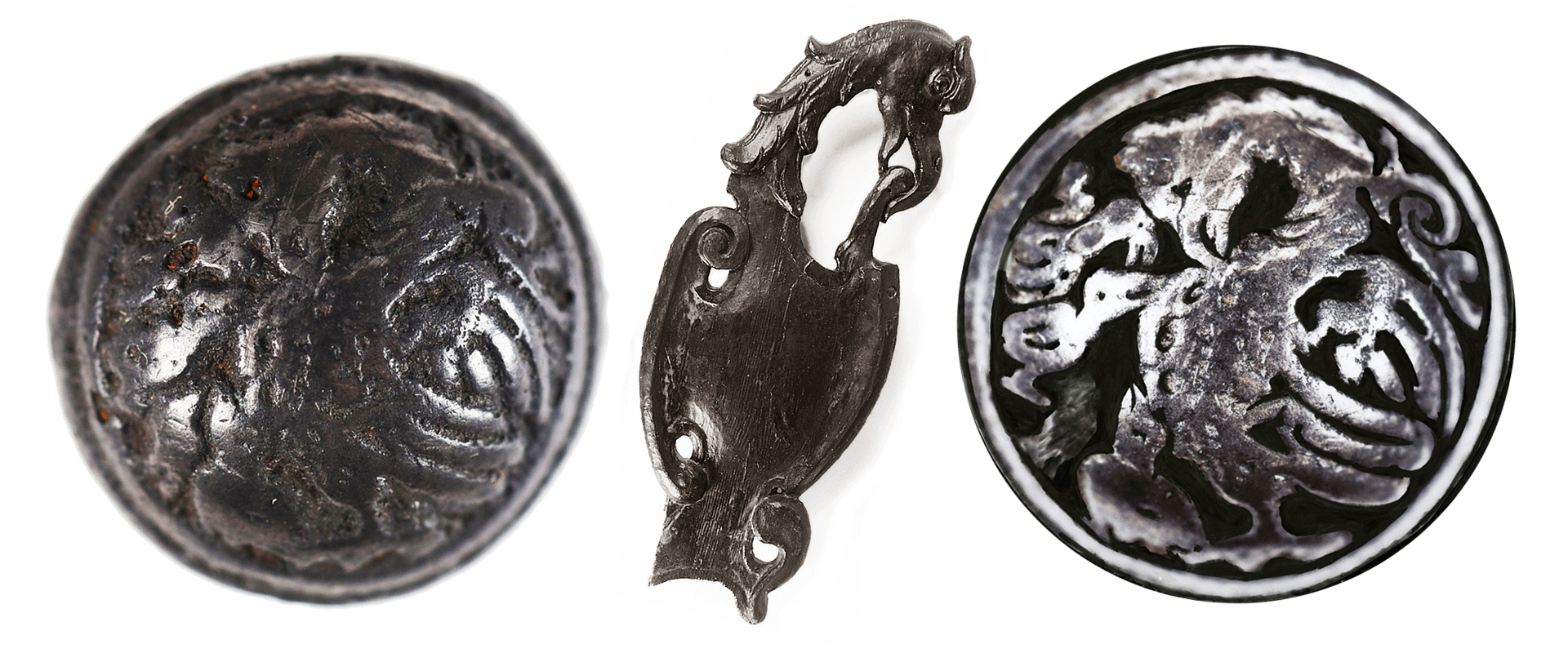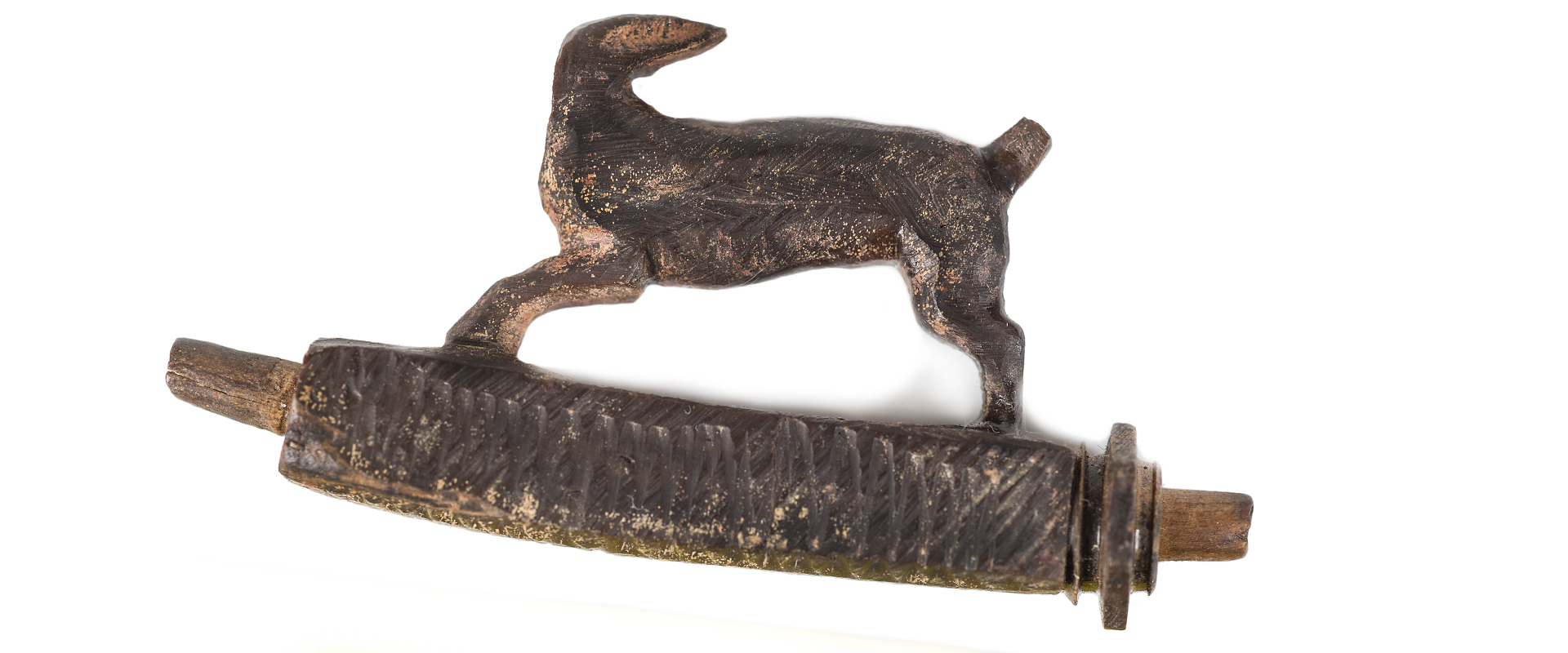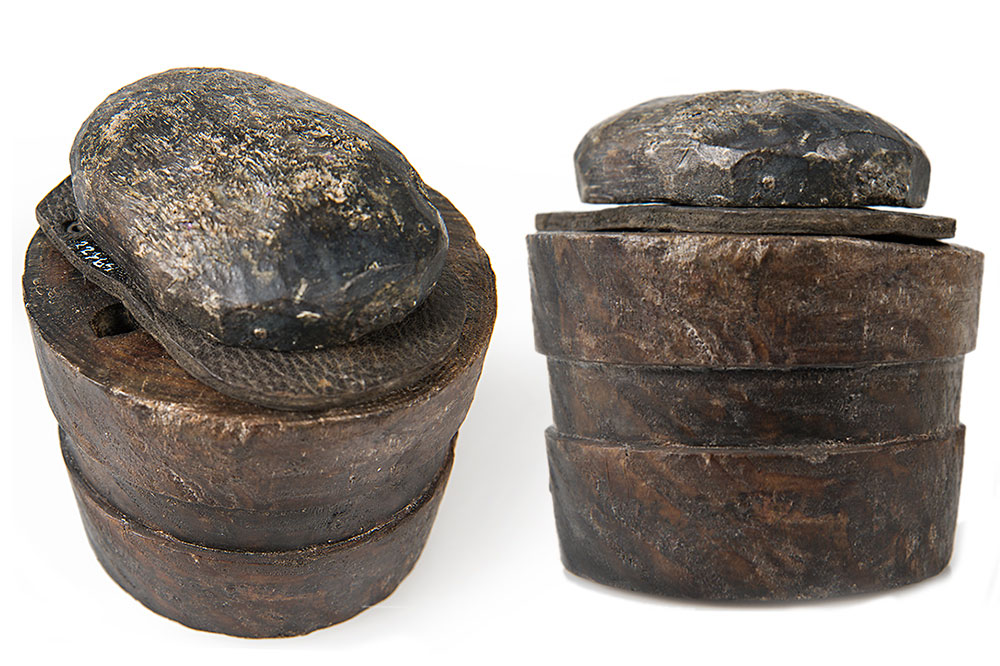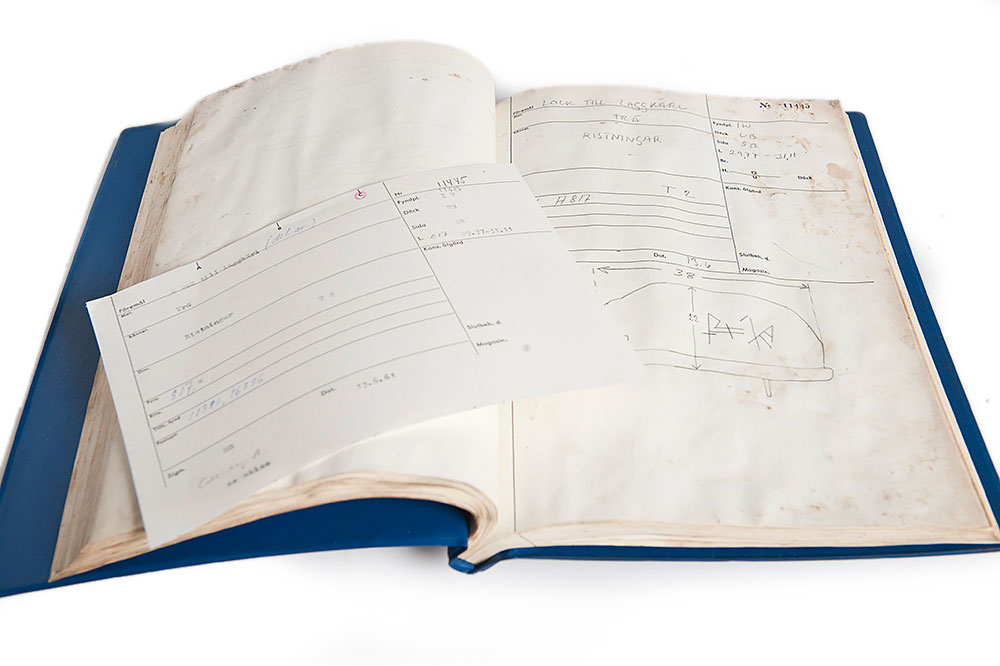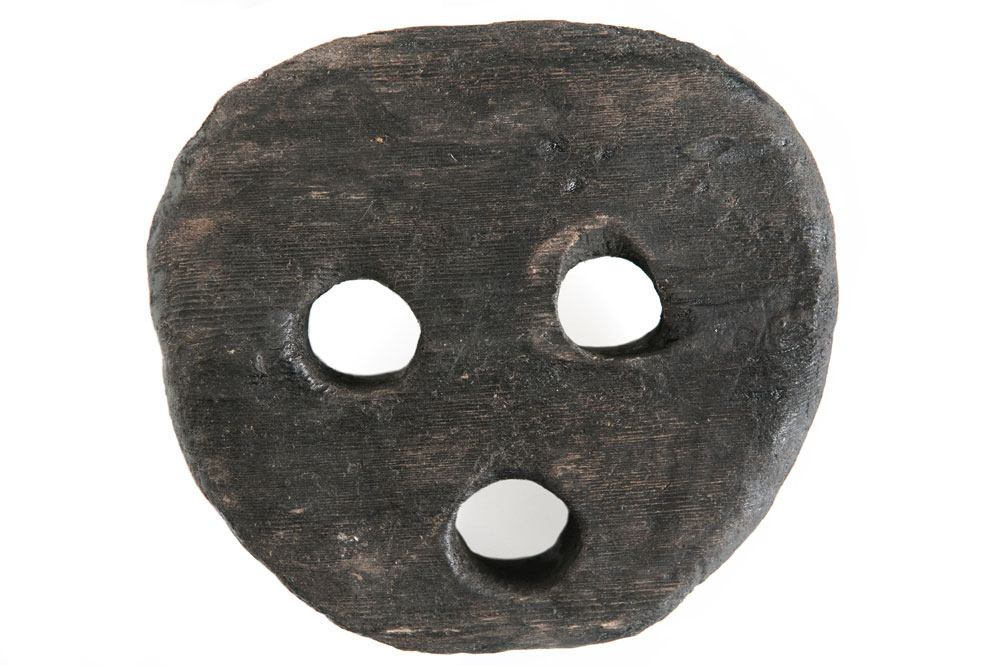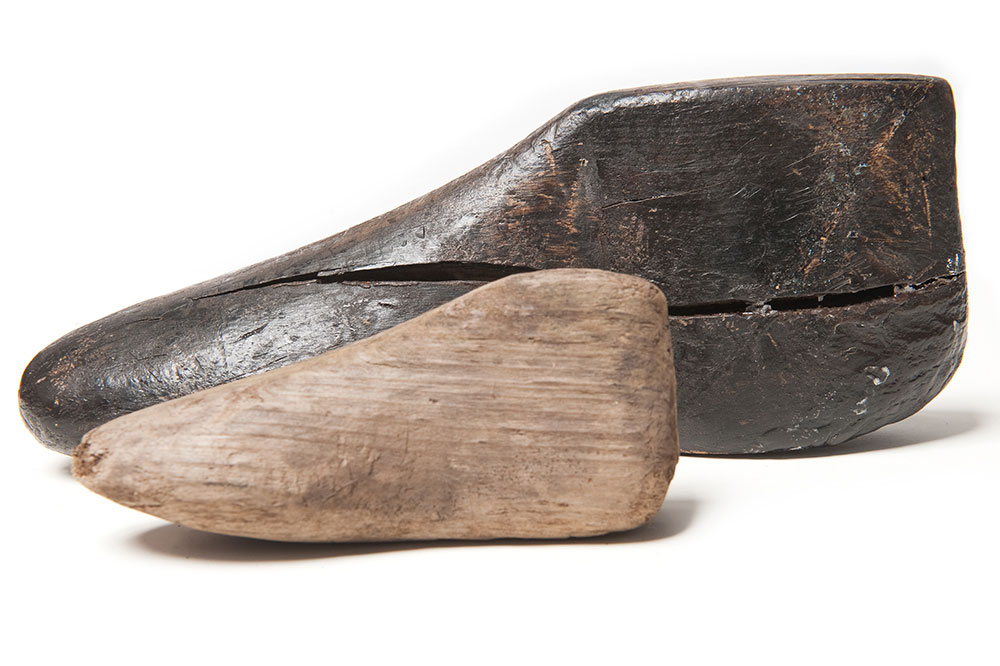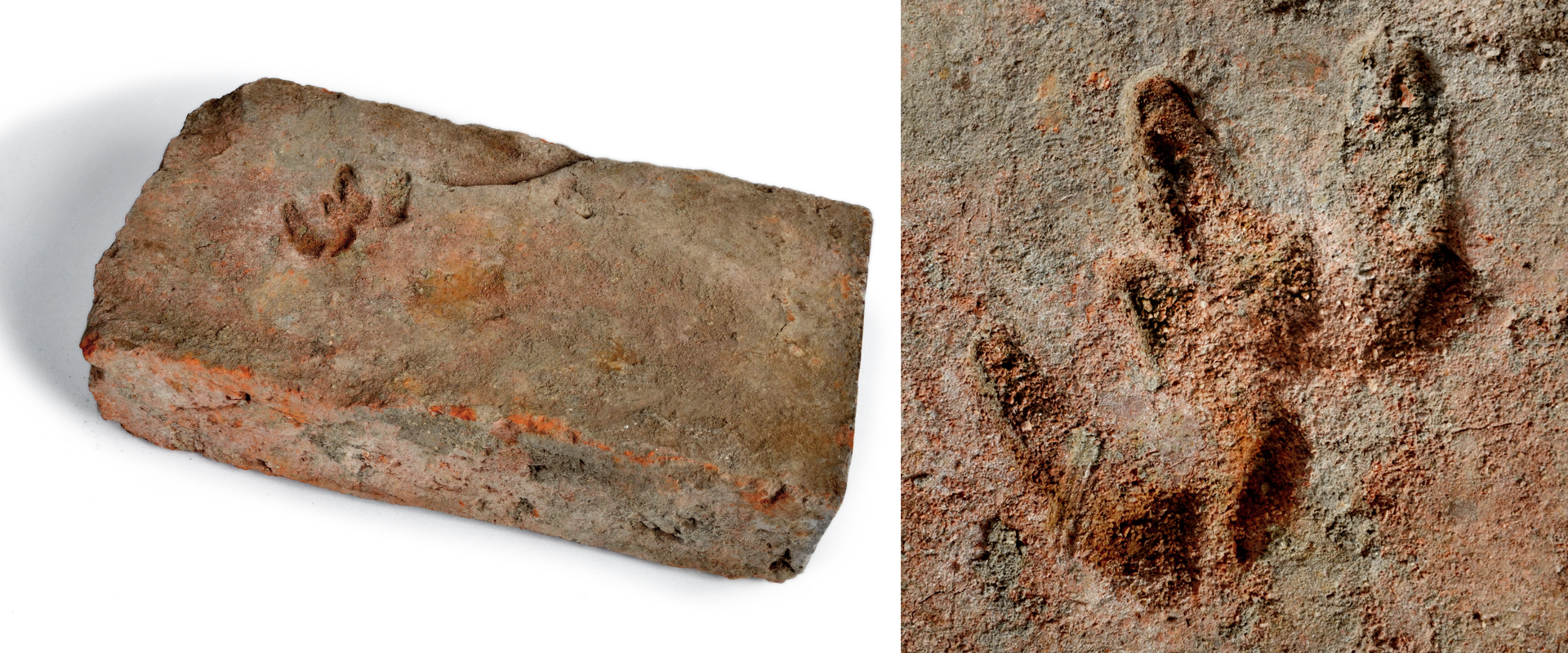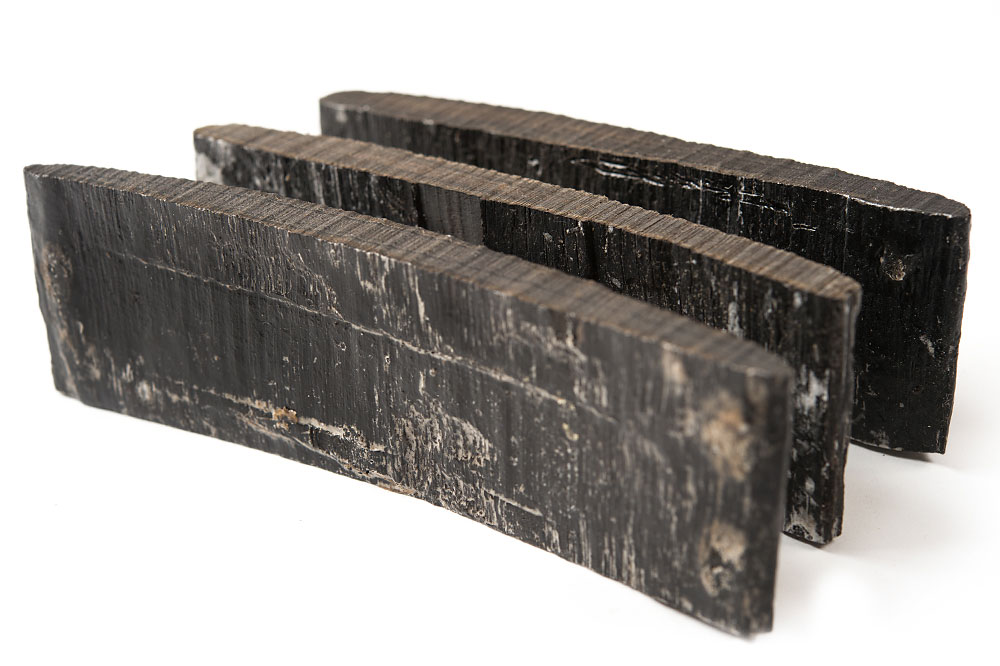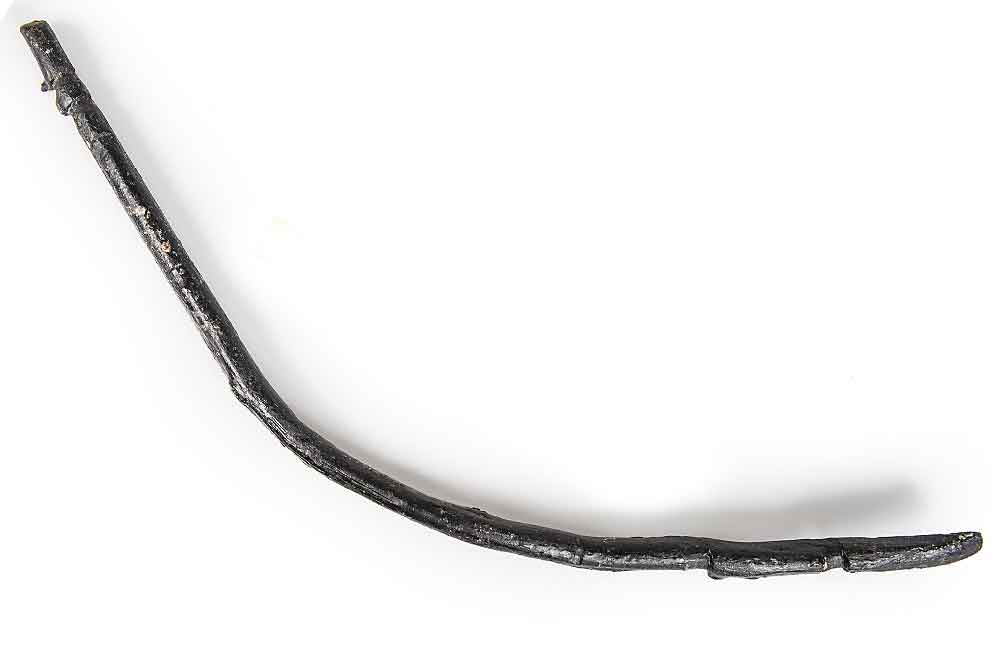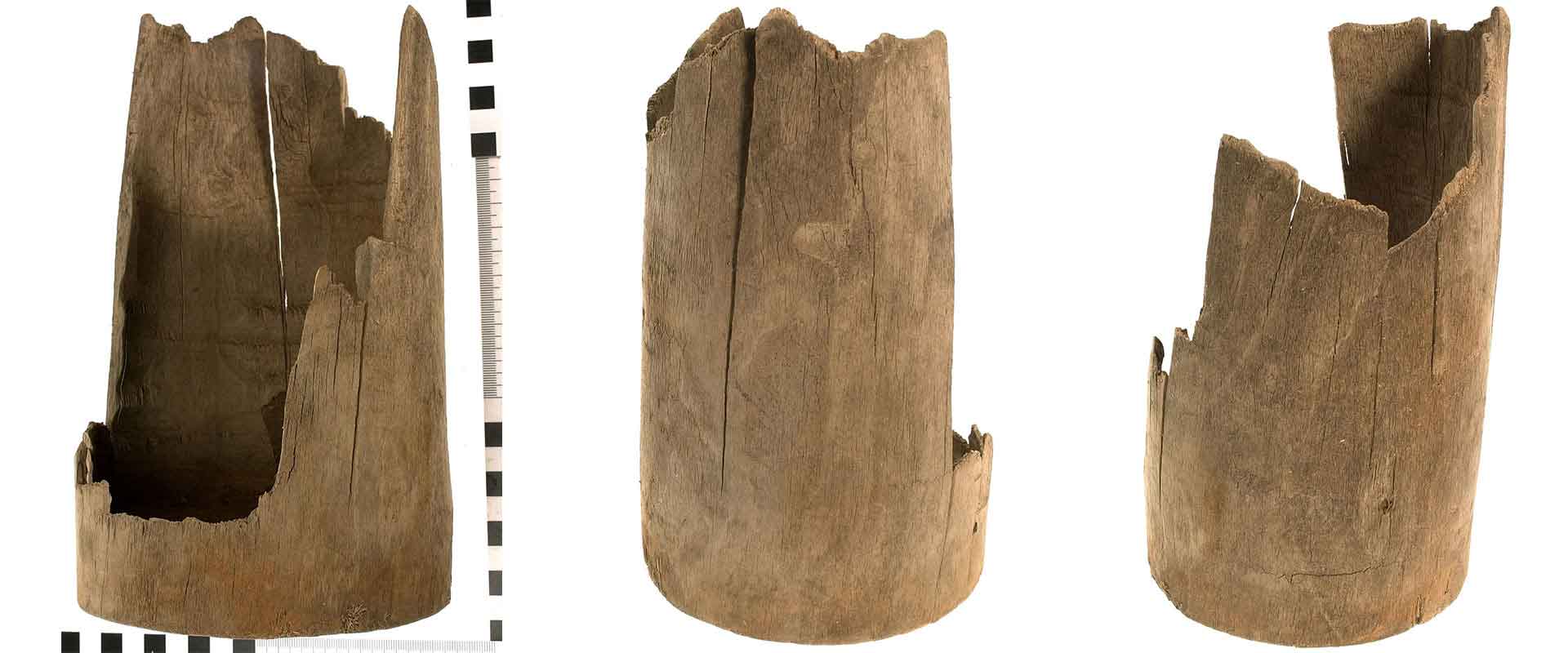During the autumn of 2015 we have begun a project to document and rehouse all of the textile remains found on Vasa. In all, this amounts to over 3000 fragments. The majority are woven in wool, but there are a few which are made with other techniques. One of these is find number 09184, which consists of a coin purse made in a technique called nålbindning.
This is a technique, similar to knitting, which has been used in Scandinavia since at least the Viking Age. It received its current name, nålbindning (literally, “needle tying”) in the 1970s. Older local names include sewing, needling, tying and knotting. It is accomplished with a special needle, which can be made of wood, bone, horn or metal. It has a flat cross section and is usually about 10 cm long, with a single eye, either in the middle or at one end. The technique involves sewing loops through each other by drawing the entire length of the yard through each preceding loop. In this way, the loops are tyed together and the work cannot be unraveled. There are several variations within the technique. Nålbindning was used primarily for smaller garments, such as caps, mittens and socks.
Knitting becomes popular
In the 17th century, knitting technique spread throughout Sweden and replaced "nålbindning", partly because knitting was much faster. Among the textiles from Vasa there are approximately equal numbers of finds made by knitting or nålbindning, but no more than 5 or 6 of each. One of the other pieces of "nålbindning" is a mitten.
This coin purse is made in wool yarn, and was found with nine copper coins on Vasa’s upper gundeck.
This is a technique, similar to knitting, which has been used in Scandinavia since at least the Viking Age. It received its current name, nålbindning (literally, “needle tying”) in the 1970s. Older local names include sewing, needling, tying and knotting. It is accomplished with a special needle, which can be made of wood, bone, horn or metal. It has a flat cross section and is usually about 10 cm long, with a single eye, either in the middle or at one end. The technique involves sewing loops through each other by drawing the entire length of the yard through each preceding loop. In this way, the loops are tyed together and the work cannot be unraveled. There are several variations within the technique. Nålbindning was used primarily for smaller garments, such as caps, mittens and socks.
In the 17th century, knitting technique spread throughout Sweden and replaced nålbindning, partly because knitting was much faster. Among the textiles from Vasa there are approximately equal numbers of finds made by knitting or nålbindning, but no more than 5 or 6 of each. One of the other pieces of nålbindning is a mitten.
This coin purse is made in wool yarn, and was found with nine copper coins on Vasa’s upper gundeck.
